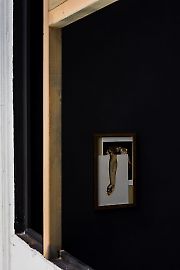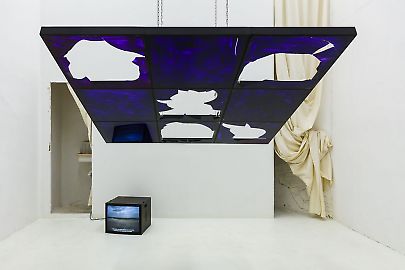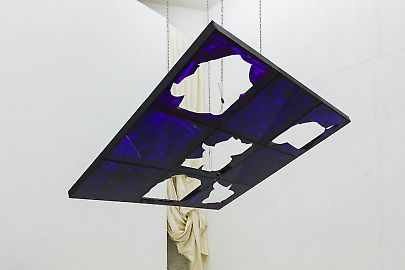Antoine Donzeaud -- Á l’endroit et á l’envers du temps/ we’ve got time
Antoine Donzeaud
Á l’endroit et á l’envers du temps
we’ve got time
curated by Alexandra-Maria Toth
All works of art are like a window open to creation; a kind of transparent screen is mounted in the window frame; through this screen, objects appear more or less distorted, as they undergo greater or smaller changes in their lines and colors. These changes depend on the nature of the screen; thus, creation is no longer credible or realistic, as creation is transformed by the medium through which the image passes. In Salinger’s Teen Novel, Zooey looks out the window and watches a little girl playing with her dog. He says: „There are nice things in this world, we are all such morons to get so sidetracked”. The window appears as a vantage point to gaze into other people’s (beautiful) lives. In Emma’s house, the window is tantamount to a screen, where she can project her fantasies (which shall never turn into reality); a dissociation; a tie between the external space and the interior space; two sides; two perspectives; a facial expression reflects in the window glass, while a view outside turns into an expectation; „There it was before her – life”. To the Lighthouse ; a family observes as the days pass and their lives develop through a window; outside the window; a distant object – apparently unobtainable, reveals yearnings, frustrations and desires; the sun sets; days go by; images, impressions and sentiments remain as fragments of the past and sometimes the present. There is no window without a story; for the window is an architectural work of art, that stores memories and tells different sides of one particular story. There is no window without a screen; a certain gaze or a plain glass is always in between; a created separation; as time passes, the window becomes a symbol for contemporary longings and memories of past days; a cracked screen; a broken window; capable to reveal one’s inner feelings; sometimes hidden behind a bunch of curtains, that once belonged to a (familiar) home. -Alexandra-Maria Toth




